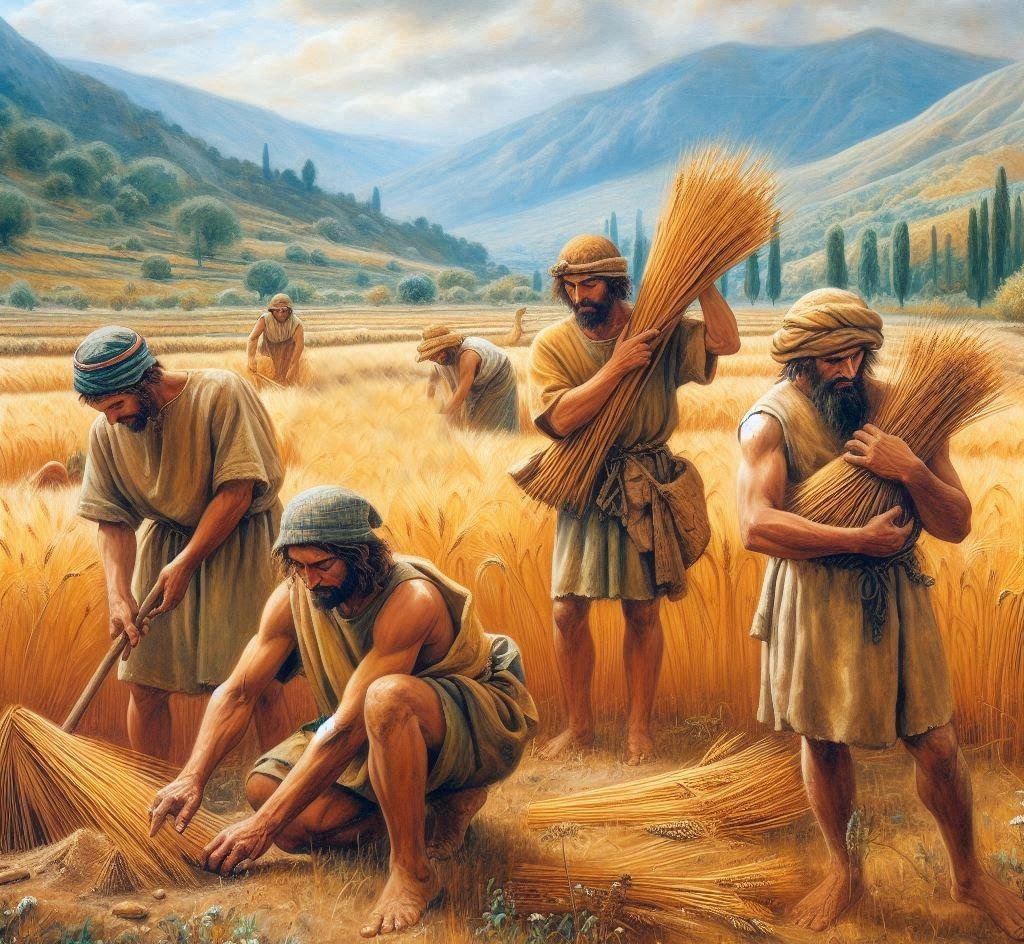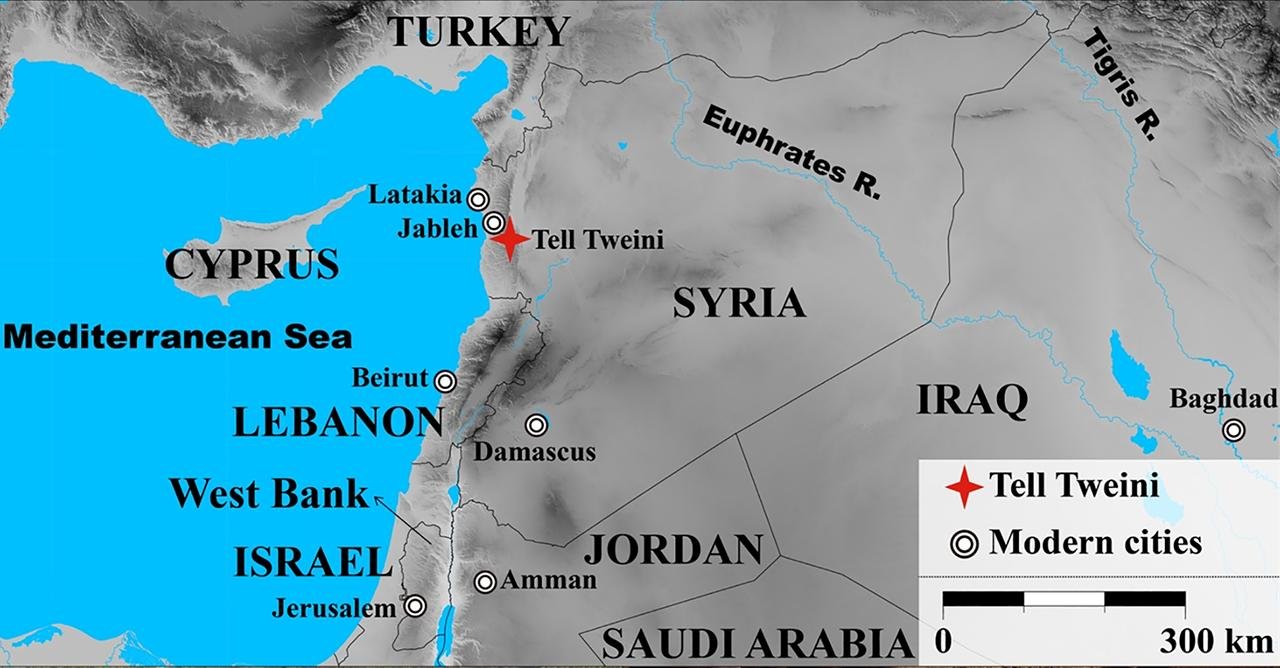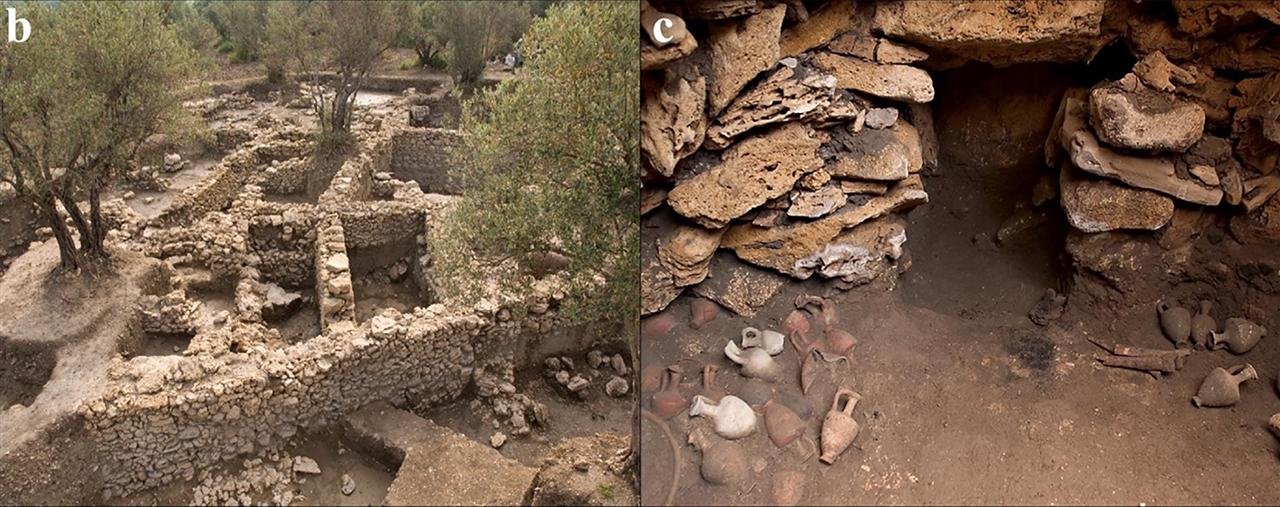
Archaeology
Archaeology is the study of human history and prehistory through the excavation and analysis of artefacts, structures, and other physical remains.
Archaeology is the study of human history and prehistory through the excavation and analysis of... View more
Ancient Syrians followed a Mediterranean diet similar to modern practices
-
Ancient Syrians followed a Mediterranean diet similar to modern practices
Recent research has revealed that the ancient inhabitants of Tell Tweini, a settlement near the Syrian coastal city of Jableh, sustained themselves on a diet remarkably similar to the modern Mediterranean diet.
 This conclusion arises from a comprehensive study published in the journal PLOS ONE, led by Benjamin T. Fuller from the University of Leuven and Simone Riehl from the University of Tübingen.
This conclusion arises from a comprehensive study published in the journal PLOS ONE, led by Benjamin T. Fuller from the University of Leuven and Simone Riehl from the University of Tübingen.The researchers employed isotopic analysis on 410 plant seeds, 210 animal bones, and 16 human bones to map nutrient flows through the food chain and agricultural systems over time. This method allowed them to reconstruct the dietary patterns and farming techniques that characterized the region’s agropastoral system.
During the Middle <a class="wpg-linkify wpg-tooltip" title="
Bronze Age
The Bronze Age was a significant period in human history characterized by the widespread use of bronze, a metal alloy composed mainly of copper and tin. This era marked a crucial transition between the preceding Stone Age and the subsequent Iron Age. The Bronze Age is typically divided into three main phases: the Early Bronze Age, the Middle Bronze Age, and the Late Bronze Age, each marked by advancements in technology, societal organization, and cultural development. During the Early Bronze” href=”https://archaeologymag.com/encyclopedia/bronze-age/” target=”_blank”>Bronze Age (2000 to 1600 BCE), the diet of Tell Tweini’s inhabitants predominantly consisted of grains, grapes, olives, and small amounts of meat and dairy. The isotopic analysis revealed relatively low levels of nitrogen isotopes (δ15N) in human remains from this period, indicating a diet mainly based on plant sources such as grains and olives. However, the presence of sheep, goats, and cattle remains suggests that animal products were occasionally consumed and used for milk.

Map of the Eastern Mediterranean showing the location of Tell Tweini in modern-day Syria. Credit: Fuller et al., PLoS ONE (2024) The similarity to the modern Mediterranean diet is striking. This diet, known for its health benefits, emphasizes grains, fruits, and vegetables while limiting animal products. It has been shown to reduce the risk of heart disease, metabolic syndrome, diabetes, certain cancers, and depression, and to improve mental and physical function.
The study also highlights the advanced farming techniques employed by the inhabitants of Tell Tweini. The high levels of Δ13C isotopes in grape remains suggest that these fruits were well-watered and meticulously cared for. Furthermore, the isotopic signatures in wheat and barley indicated that these crops received regular manure inputs as fertilizer, pointing to an intensive farming practice that likely increased over time.
These agricultural practices were essential for maintaining stable harvests, even during periods of major climate shifts and societal upheaval. The strategic use of wetlands, coastal areas, and possibly irrigation helped buffer against the effects of regional droughts, ensuring a continuous supply of essential crops.

(Left) Photo of Bronze and Iron Age houses from the Field A excavations (taken by Joachim Bretschneider). (Right) Photo of Middle Bronze Age grave with Cypriote ceramics (taken by Joachim Bretschneider). Credit: Fuller et al., PLoS ONE (2024) In addition to dietary and agricultural revelations, the study also uncovers the economic activities of Tell Tweini. Olive oil production appears to have been a significant economic activity, with the town potentially rivaling other major olive oil centers in the region. The isotopic data also suggest that domestic animals were kept together in similar environments and some consumed wild C4 plants from wetlands and disturbed areas.
The researchers analyzed plant and faunal specimens from four main periods of occupation: Early Bronze Age (2600–2000 BCE), Middle Bronze Age (2000–1600 BCE), Late Bronze Age (1600–1200 BCE), and Iron Age (1200–333 BCE). This diachronic analysis revealed that emmer and free-threshing wheat, olives, bitter vetch, rye grass, and barley were well-watered throughout these periods.
While the study provides a detailed picture of the ancient Syrian diet and agricultural practices, it also faced some challenges. Many animal and human bone samples did not yield enough preserved collagen for analysis, likely due to the region’s hot and arid climate. Additionally, the researchers had to use broad date ranges for some samples due to the lack of precise dating for certain periods.
Despite these limitations, the research offers an unprecedented window into the daily lives of Eastern Mediterranean people over 4,000 years ago.
More information: Fuller BT, Riehl S, Linseele V, Marinova E, De Cupere B, Bretschneider J, et al. (2024) Agropastoral and dietary practices of the northern Levant facing Late Holocene climate and environmental change: Isotopic analysis of plants, animals and humans from Bronze to Iron Age Tell Tweini. PLoS ONE 19(6): e0301775. doi:10.1371/journal.pone.0301775
Sorry, there were no replies found.
Log in to reply.
